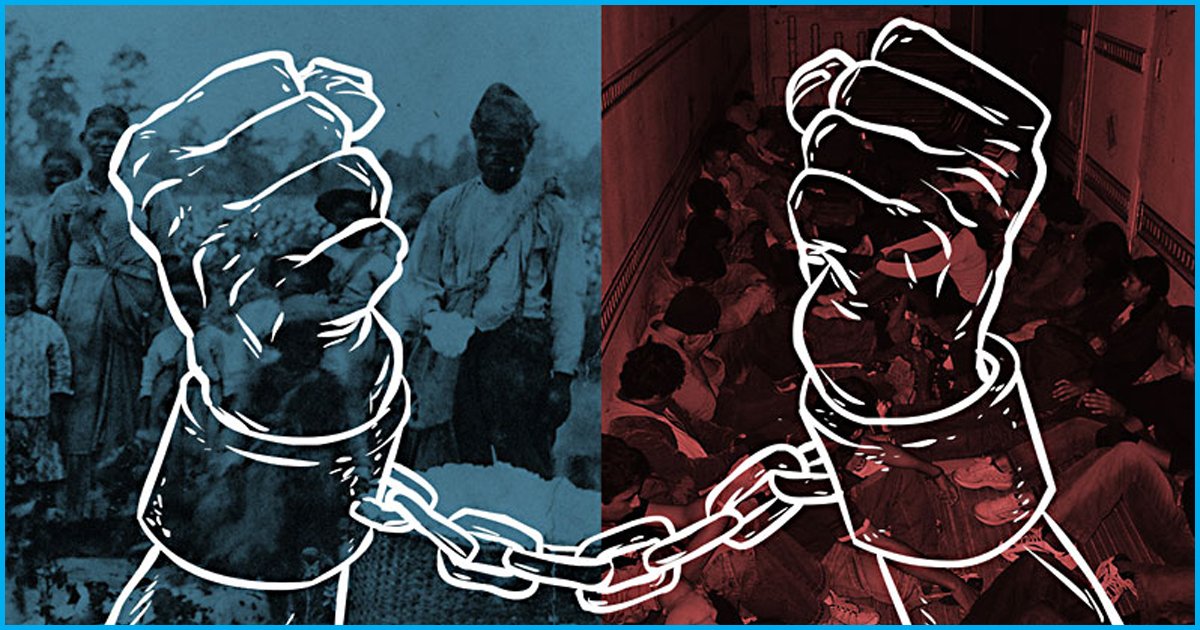
Using Data To Fight Modern Slavery
Modern Slavery
Modern slavery is one of the most barbaric and widespread forms of human exploitation. This trade in human flesh permeates most conceivable levels of supply chains and far beyond trade for sexual exploitation. The clothes you have on now could have been made from the labours of slavery.
The inhumanity shows up in the numbers. A September report by the International Labour Organization estimated that in 2016, 40 million people were victims of modern slavery, every fourth of whom was a child. To put this in perspective, in 2016, only about 35 of 233 countries had a larger population. Despite the staggering numbers, there is a disconcerting lack of discourse and systematic policy interventions.
It is important to first understand critical aspects of the crime, and then identify scope for policy innovation. Perpetrators are constantly reinventing themselves; it is high time policies followed suit, and went a step ahead.
Trade in human flesh is the forceful or fraudulent removal of an individual, being intentionally misled about the purpose. Removal is followed by making it impossible to leave. This crime is controlled by a highly secretive and organized network of perpetrators with operations and presence in small villages, urban powerhouses and of late, the dark web, across the globe. While technology is facilitating efficient crackdowns, it is also rendering more security to these clandestine operations.
The illicit trade in flesh transgresses borders, and through the victims’ perilous journeys, transports humans around the world. International commitment to fight slavery is evident from Target 8.7 of the Sustainable Development Goals, which seeks to end human trafficking, modern slavery and forced labour. Yet, actions remain disappointing.
Even nationally, laws often aim at regulating industries where victims are known to be held, like the sex trade industry, or through fair trade labels, but they lack in methods to identify these networks, the core of the problem. It is an uncomfortable truth that national governments, including ours, have failed to lay due emphasis on.
Indian states, however, are making commendable strides and innovating in their crackdown methods. Maharashtra, for instance, has 12 special cells for tracking illicit trade and a Crime And Criminal Tracking Network to connect police stations across the state. The mandatory registration of placement agencies in Jharkhand and Chhattisgarh adds an impediment to forced outmigration and gives law enforcement agencies more backing to shut an illicit operation.
Micro solutions are very crucial in striking at the root of modern slavery, and therefore, states need to be empowered in their approach. In July, at a conference organized by the Maharashtra State Commission for Women—the first ever on women trafficking by a government institution—experts discussed issues around fostering better prevention mechanisms through shared data capabilities, among others.
The next crucial step in striking at human trade should be innovation in collaborations, using different digital capabilities. Cyber trafficking is one of the biggest contemporary challenges, and systems are getting more complex through technologies like crypto currencies. Often, in issues related to cybercrimes, different agencies have snippets of information since data points are geographically scattered. Therefore, a systematic data and information platform, developed at a micro level but shared at a macro one, with algorithms to recognize irregularities, will make law enforcement more efficient and accurate.
Any progress in developing cooperative databases and cracking down on cyber trafficking will be a futuristic move. The money and internet protocol trail, identified through data sharing, will be the golden circle in narrowing down and reaching perpetrators. The prosecution and conviction of Ross Ulbricht, founder of Silk Road website, is evidence of the success of such a systematic approach.
There is also room in improving physical crackdown, and use that to develop a comprehensive database. The initial steps in combating trafficking are the receipt of information of perpetration, investigation and prosecution. Victims are often smuggled using public transport and this can be made into an effective tool in identifying plausible instances.
Recently, Air Asia trained thousands of staff members in recognizing in-transit instances of human trafficking. Education campaigns like these for transport staff and general public and the passengers can help prevent the crime early enough. We should consider taking assistance from victims in the process of profiling, educating, and creating a data base, since no one would be better placed to spot these often inconspicuous crimes. Along with networks of information sharing, this will improve investigative processes, and help identify first-instance perpetrators.
Trafficking is a menace that transgresses boundaries—national, international and of human tolerance. A 100% cooperation at the inter-state level is non-negotiable. Different states in India must recognize the roles that networks play within their boundaries, assimilate this information and share it on a national, and possibly an international platform. Developing systems that group different information points and modalities could add the much-needed sophistication and address the lack of coordination among the state’s functionaries, furthering more nuanced efforts in preventing perpetration.
– Tripti Poddar is research manager with The Dialogue, an online public policy analysis portal.
The article was first published in Livemint and The Dialogue.
 All section
All section













